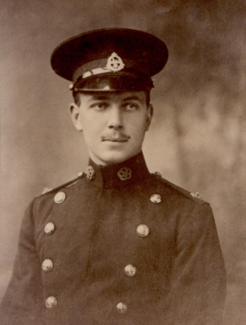Lieutenant William Malcolm Chisholm (1892-1914)

William Malcolm Chisholm, circa 1911 ( Sydney Grammar School archives ) This blog post presents items about Lieutenant William Malcolm Chisholm of Sydney, who has been officially recognised by the Australian War Memorial as t he first Australian to be killed in the First World War. This occurred belatedly on 9 July 2014 when his name was finally added to the Memorial's Commemorative Roll. Lt Chisholm was not serving in Australian uniform but as a commissioned officer of the British Army's 1st Battalion, East Lancashire Regiment. He was wounded at the Battle of Le Cateau on 26 August 1914, just three days after arriving in France, and died the next day. He was 22 years of age and is buried in Ligny-en-Cambresis cemetery, where his headstone bears the inscription "Elder son of Dr. & Mrs William Chisholm of Sydney, New South Wales". Lt Chisholm was born in Sydney in 1892, the eldest son of an eminent Macquarie Street surgeon. He grew up on Macquarie Street and att...
.png)